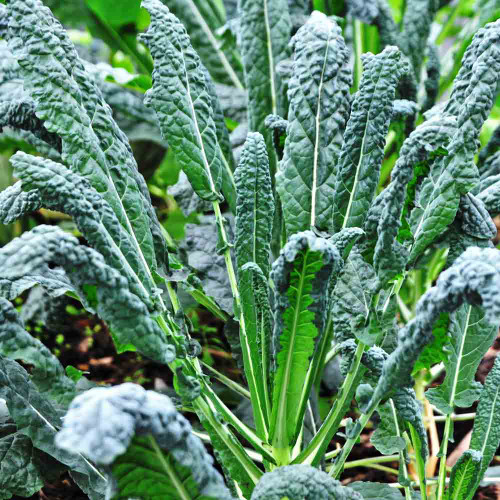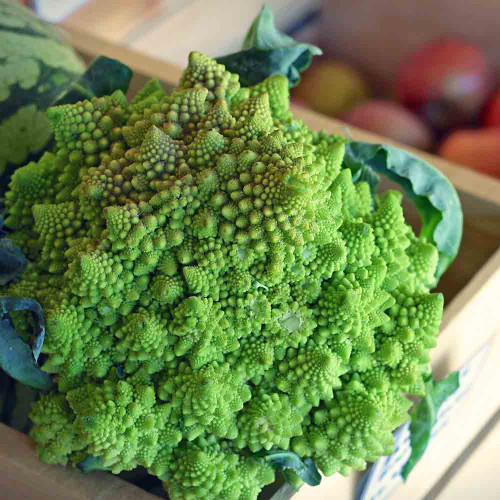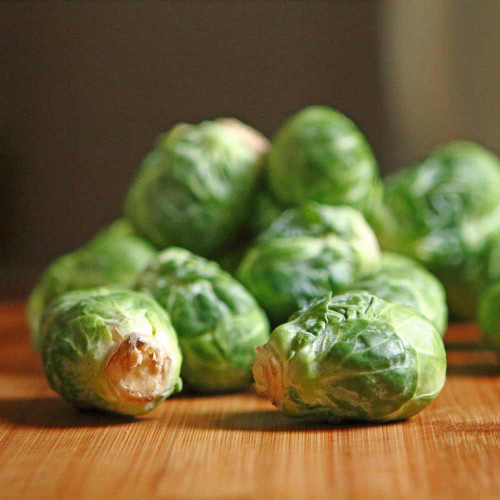Vates Blue Curled Kale Seeds - (Brassica oleracea)
- SKU:
- V1260
- Seed Count:
- Approx 200 seeds per pack
- Days to Maturity:
- 50-80 days
- Days to Germination:
- 5-10 days @ 65-85F
- Plant Spacing:
- 12-24"
- Light Preference:
- Full sun to partial shade depending on time of year
- Status:
- Heirloom, Non-Hybrid, Non-GMO seeds
Description
Vates Blue Curled Kale - Discover the Kale with an American Accent
Some of the most valuable heirloom varieties are modern classics, born not from chance but from a dedicated mission to serve America's kitchen gardens. Such is the story of Vates Blue Curled Kale. Its story begins not in a forgotten European field, but in a 1950s public service breeding program in Virginia. It was here that horticulturists thoughtfully selected a kale for the qualities every gardener truly needs: exceptional hardiness, a compact form for any sized plot, and a slow-bolting nature for a longer, more reliable harvest. The result is a trustworthy cornerstone, an invitation to grow with confidence, knowing this variety was bred to be a dependable partner through the cool seasons.
Details
Vates Blue Curled Kale brings a beautiful, sturdy structure to the garden, standing as a compact and reliable cool-season star. As a member of the Brassica oleracea species, it is a close descendant of the original wild cabbage, placing it in the esteemed company of broccoli and collards. What truly sets this variety apart is its compact, dwarf size, reaching a modest height of 12 to 16 inches while forming a vigorous, spreading rosette of leaves that can reach up to 32 inches in diameter. The leaves themselves are a work of art—finely and tightly curled with a striking bluish-green color that resists yellowing in cold weather. When it comes to flavor, Vates is consistently praised for its mildness and lack of bitterness, offering a sweet, nutty, and mellow taste that is significantly enhanced after a light frost.
History
The story of Vates kale is a uniquely American tale of 20th-century innovation, but its heritage is rooted in the ancient fields of Europe. Its ancestors are the curly-leaved "Scotch" kales, varieties prized for centuries in European gardens for their exceptional cold hardiness. In 18th and 19th-century Scotland, kale was such an essential crop that in some dialects, the word for kale, kail, also became the word for dinner itself. Gardens were known as "kail yards," and people even used the plant as a divination tool during the autumn festival of Samhain, a tradition immortalized in Robert Burns' 1785 poem, "Hallowe'en."
While many retailers confuse Vates with its older parent stock, the verifiable history of this specific variety begins with its official introduction in 1950 at the Virginia Truck Experiment Station. "Vates" is an acronym for the very institution that developed it through careful selection: the Virginia Truck Experiment Station. Founded in 1907, the station's mission was to serve the needs of small-scale "truck farms" by developing robust and reliable vegetables. Vates kale was thoughtfully selected from the 'Dwarf Green Curled' variety for its superior traits: a compact form for higher-density planting, exceptional hardiness, and a slow-bolting nature for a longer harvest. It is a modern heirloom, preserved not for its age, but for its unmistakable excellence.
Uses
The superior texture and mild, sweet flavor of Vates make it exceptionally versatile in the kitchen. Unlike tougher kales, its tender leaves are perfect for raw preparations. The key to a perfect raw kale salad is to "massage" the chopped leaves with a bit of dressing for a minute or two; this simple action breaks down the fibers, making them even more tender and palatable.
Vates also shines in a wide array of cooked dishes. The sturdy, curled leaves hold their texture well in soups, stews, and sautés without disintegrating. In Italy, kale is often tossed with pasta or used as a pizza topping. The structure of Vates leaves also makes it perfectly suited for making kale chips—when torn, tossed with oil and salt, and baked, it transforms into a crispy, savory, and highly nutritious snack. Kale pairs well with aromatics such as garlic, shallots, ginger, and onions, herbs including rosemary, oregano, and thyme, lemon juice, and nuts such as walnuts, pine, and almonds.
Companion Planting
You can enhance and protect Vates' growth by planting it near beneficial companions. Strong-smelling aromatic herbs like rosemary, sage, thyme, and mint can help mask the scent of kale, confusing pests like the cabbage moth. As a heavy feeder, it also benefits greatly from being planted near legumes like bush beans and peas, which fix nitrogen in the soil, providing a crucial nutrient for lush, leafy growth.
To avoid attracting shared pests and diseases, it is best to avoid planting it in close proximity to other members of the brassica family, such as cabbage or broccoli.
Planting and Growing Tips
Vates performs best in the moderate temperatures of spring and fall. It is exceptionally cold-hardy and can survive temperatures down to 10°F, with its flavor becoming noticeably sweeter after a frost. For the best results, provide it with fertile, well-drained soil rich in organic matter and at least six hours of full sun. Consistent and even moisture is critical for the most tender, sweet-tasting leaves.
The compact, dwarf habit of Vates makes it an outstanding choice for container gardening. You can grow a single plant in a pot that is at least 10 to 12 inches deep and wide. To ensure a continuous supply of fresh greens, succession planting is the key.
- For Cool-Winter Climates: To get the most out of your fall and winter harvest, begin sowing seeds in mid-to-late summer and continue planting a new batch every two to three weeks until about a month before your first expected hard frost. This will give you a steady, uninterrupted supply of both baby and mature leaves throughout the autumn months.
- For Warm-Winter Climates: Your succession planting window is much longer. Begin sowing seeds in the fall as the weather cools and continue planting every few weeks throughout your mild winter. This strategy will provide a continuous harvest right through to the spring, ensuring your kitchen is always stocked with fresh greens.
Harvesting Tips
Vates offers a flexible and extended harvest. You can begin picking tender baby leaves as early as 30 days after sowing, while full-sized leaves are typically ready 50 to 80 days from sowing. The most effective harvesting method is the "cut-and-come-again" technique. Using a sharp knife, harvest the lower, outer leaves first, leaving the central bud and small inner leaves intact. This encourages the plant to continuously produce new leaves from its center, ensuring a sustained harvest for many weeks. For the best flavor and crispest texture, always harvest in the cool of the morning.
Learn More
From the soil to the seed to the food you eat - we'll help you grow your best garden!

















